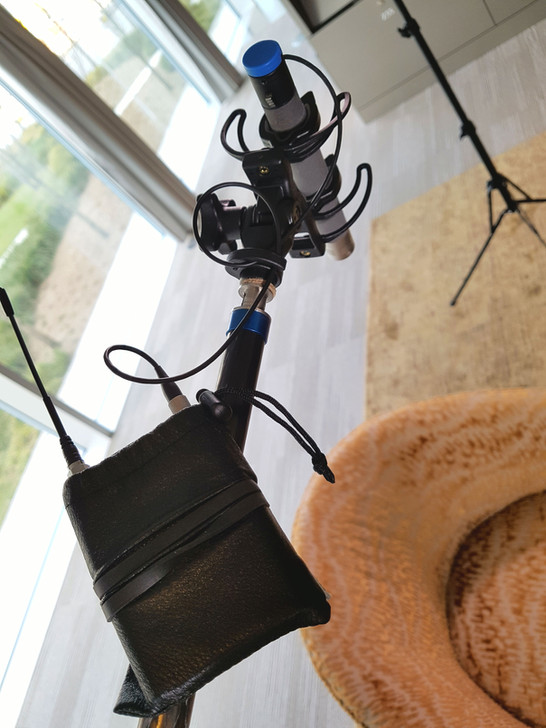The humble boom pole is a constant feature of film and video production.
While radio mics have proliferated every facet of production filling up all of those extra channels that mixer manufacturers have been giving us, the boom is still correctly regarded as the "proper" way to capture audio for a film. With larger fuller sounding mics that can be placed in the correct location for speech pickup the boom mic has prevailed.
If the film is being shot on an iPhone, the sound still relies on its traditional form factor, and while powerful multitrack packages can fit very small bags (see my previous post "Small Packages for Professional Sound", it is still the mixer, boom and radios package required to record audio that sounds good.
A boom pole denotes a film crew, it's the first thing you might notice popping out above a crowd of people before you see the camera or hear the shout of action from the director.
What I'm here to talk about though is the boom itself. What it does, the different sizes and what those different sizes might be used for.
If you're just starting out as a sound recordist or boom operator then you probably got a Rode aluminium pole. It's cheap got decent reach, and folds up reasonably sized, but it weighs a lot for a professional boom that you're going to be using as the main tool of your trade. Save a little and you'll want to step up to something a lighter and more pro feeling.
The biggest names in the game are Panamic, Ambient, K-Tek and VDB. These companies have been providing poles for every level of the game from features to short documentaries for decades.
Panamic are probably the most highly regarded in the world of feature films. They've been swung on all of the biggest films and they have a reliability that goes relatively unchallenged.
Ambient have also been making poles for a very long time. Their feature poles are very highly regarded and are very high spec. They hand make their top poles and offer booms that can fold down and fit in hand luggage, right the way up to 17ft feature film beasts.
K-Tek have picked up a great following among documentary style sound recordists. Their carbon poles are very light and offer an excellent extension ratio.
VDB have also been making poles for a long old time. This French manufacturer claims the crown for the lightest poles for any given extension. Some say that comes at a cost of fragility at extreme lengths, but those boom operators with the touch to handle them swear by them.
A boom pole can be categorised a a few ways, but most people see the distinction as relatively straightforward. There are doco poles and there are feature poles.
A doco (documentary) pole is a pole with a reach of under 15ft. They have a numerous sections, usually five or six, in order to both have good reach and be small enough to pack away into a relatively small case.
A feature pole has a reach of over 15ft and can go on right up to 20ft. They are long so as to keep clear of action and to ensure that the boom operator can stay well clear of camera moves. Typically, due to the nature of extending a pole to those lengths, a feature pole will have fewer sections usually three or four, and will be made of slightly thicker material in order to retain rigidity on long extensions.
But what does this all mean?
Well I suppose the rest is really up to you. What work you do and how you want to go about that work. I have poles for different occasions. A small pole for travel a medium one for indoors and a massive feature one for those big time shots!
As always, feel free to comment and share these posts!





